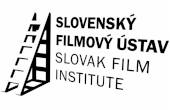According to the report, 21 countries experienced growth in 2014 compared to their levels of funding in 2010. Self-generated income via copyright, repayments and other activities was above 10% of the total income in only four countries with the Czech Republic leading with 32%.
As for taxes and levies these amounted to 81.5% of income in Poland and 93.4% in Romania. In 16 countries taxes or levies were not included among the sources of income for funding; in another four, it was below 20%. Only in four of the remaining 13 countries did taxes and levies account for more than 80% of the income.
Contributions from the national/federal government as a share of total income range from 100% in Bulgaria, Cyprus, Lithuania and Macedonia, 90-99% in Estonia and Slovenia to 70-79% in Latvia, 50-69% in Croatia and Slovakia, 30-49% in the Czech Republic and Austria, 1-9% in Poland and 0% in Romania.
Financing from regional and local governments was identified in 13 of the 33 countries analysed, but only in four countries were these contributions from regional and local governments above 25%. One of these countries is Latvia, with 28.6% of the overall income.
The 13.2% five-year increase of spend in 2014 was not a homogeneous trend, with only 18 countries seeing an upward trend, whereas overall spend dropped in the remaining 15. Poland experienced a sharp decrease of approximately 25% and the Czech Republic a decrease of approximately 15%.
The jewel in the crown of film and audiovisual funds in Europe continues to be theatrical production, which accounts for 42.6% of all resources spent between 2010 and 2014. In Poland theatrical production accounts for 98% of spend.
The report highlights a 150% five-year growth of funding for theatrical production in Latvia, 33% in Slovakia and 28% in Bulgaria, and also a decrease of over 50% in Cyprus, 50% in Slovenia, approximately 30% in Poland and the Czech Republic and 10% in Romania.



















